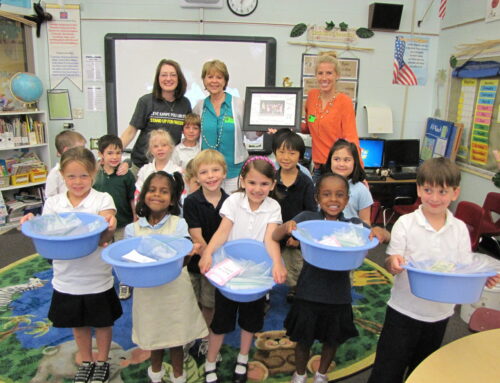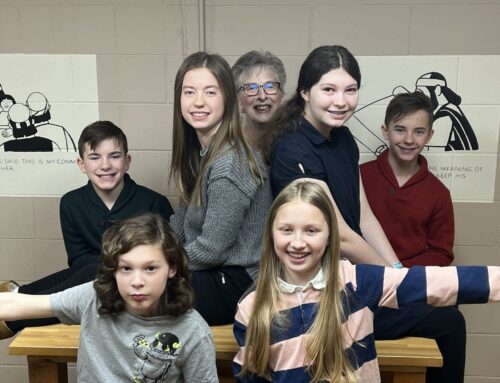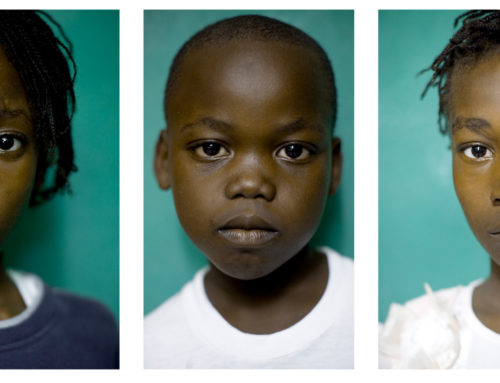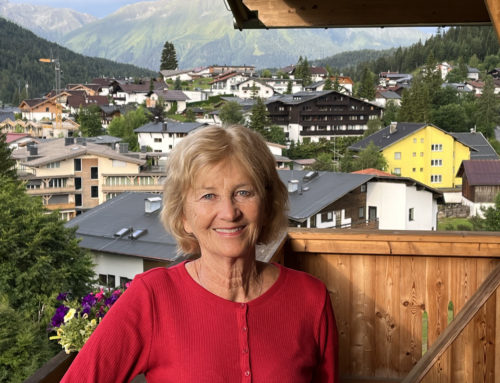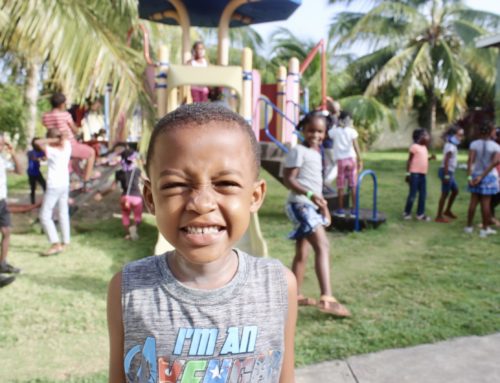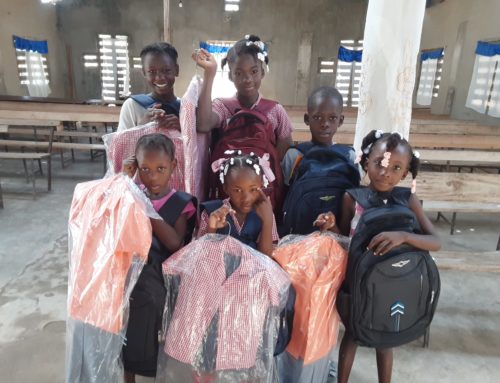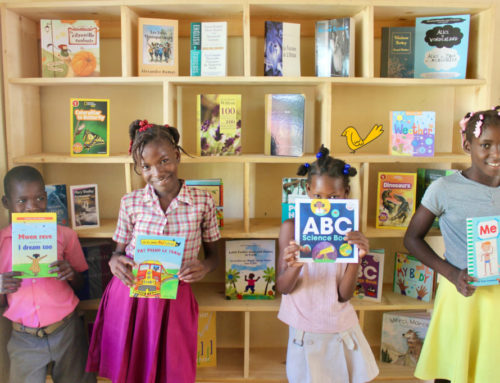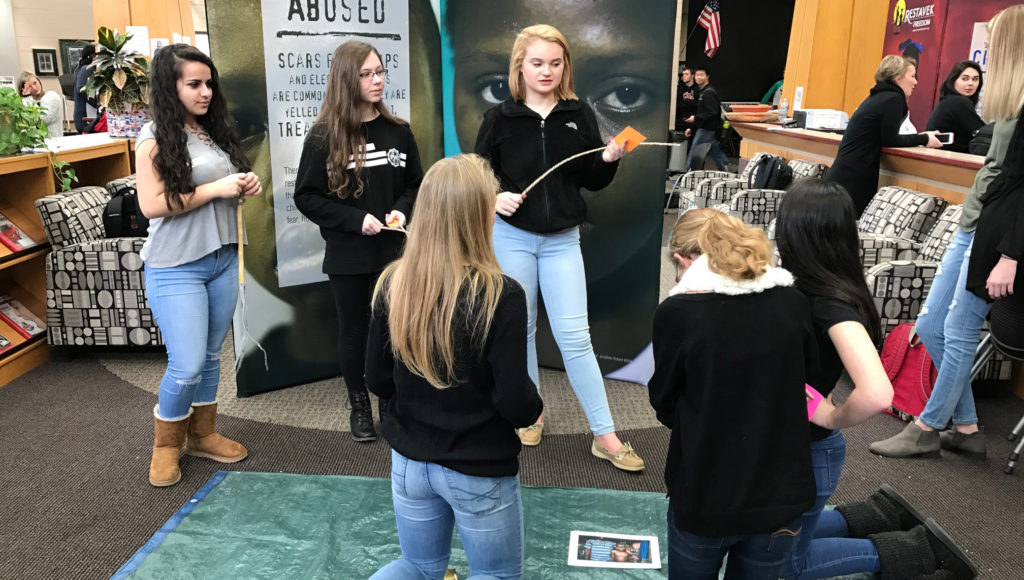
Ann Ryan and Jamie Woy teach French and Spanish at Oak Hills High School in Cincinnati, OH. Since 2012, they have been working with their upper level students to raise awareness about restavek. Every year, the top students in each department deliver presentations about restavek – in French to fellow French students; in Spanish to fellow Spanish students; and in English to other classes. Along with delivering a presentation, the students also lead their peers through a series of stations to help them understand what life in restavek is like. This year, the students began selling jewelry and t-shirts to raise money for Restavek Freedom, and for the child they have sponsored for the past three years.
We had the opportunity to talk with some of these students, along with Ann and Jamie, about their work.
Restavek Freedom: As students, what is your goal in working with Restavek Freedom?
Student: I know mine is awareness.
Student 2: I think also awareness. This year we sold t-shirts to spread awareness and to raise money.
RF: What was the most surprising thing that you learned about children in restavek?
S: They gave examples of what the children have to go through in their daily lives and how they were treated and the kind of work they had to do. It was really surprising compared to what we have to do every day.
S2: I know I have a six-year-old sister, and my Psychology teacher said to think about your siblings going through that. It kind of made me somber and cry a little, because I don’t want her to go through anything like that.
S3: I think what surprised me as well was just the sheer amount of children going through [restavek], because not a lot of people think of that, or recognize that there are so many people going through this. There’s just not enough awareness about it. That’s why I’m really glad we do this.
RF: What’s the most difficult thing about giving your presentations in French or Spanish?
S: For the lower level classes it’s kind of difficult to convey how serious it is when you’re talking in Spanish, because the [lower level students] joke about how they may not be able to understand it. So it’s really important that you make it known that it’s a really, really dire issue and not really something to laugh about.
S2: It also helps that we have all the props with us because [during the] presentation they’re just standing there, but then when they actually get in there and do the actual hands-on activities, it helps further push the examples.
RF: What hands-on activities do you have the students do?
S: For my station – I was the exhaustion station – and it was where they showed the everyday work of a child in restavek. So they had you cleaning pots and pans, trying to get dirty clothes clean with a rock. One of the things that really got their attention the most was that they had a barrel full of rock salt that would symbolize water that children had to carry, and they had to carry it on their heads.
S2: I was in the abuse station, where you describe what kind of abuses these children have to face from the people that they work for. At the station there are different examples: there are whips that showed the students what they would get hit with. There was a pile of rock salt and graters on the ground, and you would have to kneel on these because that’s what they make the children kneel on as their punishments. We would even ask them if they wanted to do it with their backpack on, because sometimes the children who are being punished have to do it weights on their back, just to make it even heavier. So there’s that kind of experience that they have to go through.
RF: How has learning about RF influenced what you’d like to pursue after high school?
S: I think personally that I’ve always wanted to go into the medical field, but it really made me look more into Nurses Without Borders, because it’s showing you how you can be connected with other parts of the world. People think there’s nothing we can do, but there’s so much you can actually do – people just don’t realize it.
S2: I was going to go into physical therapy. I grew up in a family where we were always doing mission work – like my grandpa was in Uganda multiple times, and I’d do mission trips in the west side of the U.S. I’m actually going to Haiti this summer, so I’m going to use the language, but I’m also going to put what I learned to use.
RF: What is something that you wish people understood about children in restavek?
S: I would say the severity of the issue. I feel like that’s one thing people really overlook.
S2: I would say the importance of education, because I think people think, “How would sending [a child in restavek] to school help when that child is going to be in the restavek system anyway?” But it’s a huge help to get them out of the cycle, and that will get their children and future grandchildren out of the cycle too.
S3: And I think people need to know there is hope and you can actually do something to help, which is really important. Some people think, “Yeah, it’s an important issue, but I can’t do anything.” But there is something we can do. We’re trying to show that by selling the shirts and selling the beads.
The students also showed us a photo of their sponsor child, saying, “This is what I want people to understand more from the restavek exhibit: these are actual people and not just statistics. If they could see his smile, then I think that would motivate more people to help.”
Join Us
At Restavek Freedom, we are dedicated to ending child slavery in Haiti. We have committed our work and our influence to 1) freeing children from isolation, exploitation and abuse, 2) educating and engaging with families so children do not end up as slaves, and 3) transforming hearts through national outreach efforts that empower change. Founded in 2007, we have a strong Haitian-led team working throughout Haiti, with staff based in Port-au-Prince and Port Salut, as well as a small support staff in Cincinnati, Ohio. Donate now, sponsor a child, and join us today to play a part in ending child slavery in Haiti.


